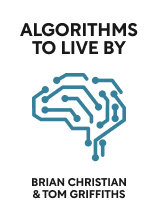

This article is an excerpt from the Shortform book guide to "Algorithms to Live By" by Brian Christian and Tom Griffiths. Shortform has the world's best summaries and analyses of books you should be reading.
Like this article? Sign up for a free trial here .
How should you optimally spend your working hours every day? What tasks should you complete first?
Your optimal scheduling depends on your goals and priorities. In their book Algorithms to Live By, Christian and Griffiths make a case of using computer algorithms to schedule your day in the most optimal way.
Here is how to schedule your time using Christian and Griffiths’s scheduling algorithms.
Scheduling Algorithms
If you want to know how to schedule your time effectively, you don’t need to predict what’s going to happen—you just need to know how to evaluate new options as they present themselves. Christian and Griffiths’s simple algorithms are intended to make this evaluation as easy as possible.
Algorithm #1: To be efficient, complete the shortest tasks first, weighted by importance.
Christian and Griffiths assert that most of the time, your highest priority is to complete whatever tasks earn you the most value.
Typically, the tasks we need to accomplish come with rewards for completing them and/or consequences for remaining incomplete. The authors explain that if all your tasks are equally important, you can maximize your value by completing whatever available tasks that will take you the shortest amount of time. In computer science, this algorithm is called “Shortest Processing Time,” or “SPT.”
However, Christian and Griffiths point out that in real life, the items on our to-do list are never completely equal. Clearly, you wouldn’t go grocery shopping instead of attending your wedding just because it would take less time. Therefore, Christian and Griffiths advise you to assign a “weight,” a measurement of value, to every item on your to-do list. By dividing this weight by the amount of time it’ll take you to complete the task, you can easily calculate how much value you’re generating every hour that you’re working.
By continuously working on whatever task gives you the most value per hour (a “Weighted SPT” algorithm), you can squeeze the most value out of your workday as possible.
Money is the simplest way to measure the “weight” of a given task—calculating your hourly rate for every task on your to-do list will give an easy way to schedule for maximum value—but assigning your own “importance values” to each task works just as well.
| Brian Tracy on How to Schedule Your Time In the productivity bestseller Eat That Frog! Brian Tracy places even more importance on the need to weigh your tasks by value than the authors do. He argues that your most valuable tasks are almost always the most difficult to complete—as a result, most people procrastinate on these major tasks, filling their time with easy busywork that ends up accomplishing very little. Tracy’s thesis is that unless you intentionally tackle difficult high-value tasks first, life will hand you a never-ending supply of easy low-value tasks, and you’ll never get around to doing what’s truly important. Instead of following Christian and Griffiths’s suggestion to calculate value per hour, potentially getting bogged down in unnecessary math, Tracy recommends that you sort each of your tasks into tiers of importance. Assign each task on your to-do list a letter: A, B, C, D, or E. Complete “A,” “B,” and “C,” tasks in descending order of importance. “D” stands for “delegate”—find a way for someone else to do this task for you. “E” stands for “eliminate”—habitual tasks that do nothing but waste your time should be ruthlessly cut out of your schedule. Tracy’s advice diverges from Christian and Griffiths’s Weighted SPT algorithm in that he doesn’t find much use in tackling the shortest tasks first. In his view, by breaking your most important tasks down into a series of shorter steps, you can translate everything you have to do into tasks that take approximately the same amount of time. Then, all you need to do is rank them by importance. |
Algorithm #2: To get a psychological boost, complete the shortest tasks first.
An Unweighted Shortest Processing Time algorithm involves simply doing the shortest tasks first, no matter what they are. Christian and Griffiths state that you may choose to use this algorithm if you require motivation or if you’re stressed and overwhelmed by a large quantity of tasks.
Crossing items off your to-do list provides real psychological benefits. If you need to feel like you’re getting things done or you want to cut your to-do list down to an emotionally manageable size, tackling your shortest task first may be the right move.
| Psychological Relief Through Scheduling Christian and Griffiths argue that Unweighted SPT is the best way to relieve mental stress because it’s the fastest way to shrink your to-do list. However, in Getting Things Done, David Allen argues that you don’t actually need to complete pending tasks in order to lighten their mental burden—you just need to feel as if they’re under control.In Allen’s famous “Getting Things Done” task management system (or “GTD,” as it’s widely known), you create feelings of control over your time by “capturing” every one of your tasks, goals, and commitments in an external organizational system. Every single action you need to take should exist in some form outside of your brain. This alleviates your mental burden by making sure you never need to worry that you’re forgetting something. |
Algorithm #3: To minimize total lateness, complete the task due soonest.
The third algorithm we’re going to focus on is what’s known in scheduling theory as “Earliest Due Date,” or “EDD.” With this algorithm, you work on whatever task needs to get done soonest, no matter how long it’ll take to complete.
Use this algorithm if your top priority is to minimize total lateness in terms of hours or minutes—if there are penalties for not getting your jobs done on time that get worse the longer tasks remain unfinished.
This strategy might work best for a student trying to stay on top of homework assignments from many different classes or an intern balancing tasks from multiple departments within a company—situations where lateness is a primary concern. As we’ll see next, however, this strategy is not without its drawbacks.
Algorithm #4: To minimize the number of late tasks, use Moore’s Algorithm.
Lastly, Christian and Griffiths offer a strategy called “Moore’s Algorithm.” This algorithm is a variation on EDD and attempts to accomplish a similar goal. Instead of minimizing total lateness in terms of time, Moore’s Algorithm attempts to minimize the total number of late tasks.
With Moore’s Algorithm, you begin by laying out your entire to-do list in order of Earliest Due Date. Look over your schedule. If it’s obvious that you won’t currently be able to complete all of your tasks by their due dates, identify the task that will take you the longest and either schedule it to be done last or throw it out altogether. Repeat until you have a schedule with fully manageable due dates, with a few exceptions either thrown out or collected at the end.
Christian and Griffiths explain that this algorithm has one specific advantage over Earliest Due Date. If you fall behind using EDD, you’ll be stuck turning in one late task after another, struggling to dig yourself out. On the other hand, with Moore’s Algorithm, you’ll have to turn in a few tasks extremely late or abandon them completely, but you’ll finish the majority of tasks on time or early. For example, if you’ve checked out a stack of library books but don’t have time to read them all before they’re due, Moore’s Algorithm will work better than EDD. It’s better to skip reading one book than to pay late fees for each one.

———End of Preview———
Like what you just read? Read the rest of the world's best book summary and analysis of Brian Christian and Tom Griffiths's "Algorithms to Live By" at Shortform .
Here's what you'll find in our full Algorithms to Live By summary :
- How to schedule your to-do list like a computer
- Why making random decisions is sometimes the smartest thing to do
- Why you should reject the first 37% of positions in your job search






